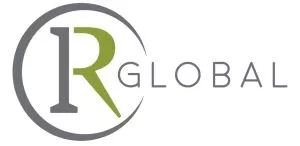Tree Roots was painted by Van Gogh on the same day of his suicide attempt in Auvers-sur-Oise, July 27, 1890. On the canvas, an interlacing of trunks, stumps and roots crawling towards the ground, a dive in the unconscious of the creative process, knotty and asphyxiating. This painting questions me in particular about the links between will and inner torment.
Faced with such a dense picture, what did I think? I confess it with a little haughtiness... to competition law, a sadly Keynesian reflex in the face of creation. This equally tortuous and obscure path has given rise to numerous scientific studies related to anti-competitive agreements. Such a subject also crystallizes the confrontation between the will, or consciousness, and the external and new sources which can affect it. The opportunity to delve into the deep and dark heart of the cartel.
The agreement, the will and the software.
The myth of perfect competition is based on the uncertainty for an economic operator to understand the actions of its competitors in terms of price, technology, communication, etc. Its objective is to provide buyers with the ability to choose, at the best price.
An anti-competitive agreement will be based on an agreement between operators to eliminate the uncertainty of the myth by artificially fixing a price and ensuring comfortable margins. The members of the cartel only have to monitor each other for the agreement to continue.
Important clarification: beyond the formal agreement, there is concerted practice or fraudulent collusion. This form of coordination allows the actors concerned – without formal agreement – to avoid risks linked to competition. In this case, there must be an act of will in the collusion because a simple parallelism of behavior will not be open to criticism by competition law.
In both cases – formal agreement or fraudulent collusion – the heart of the agreement lies in the common desire of the members to distort the market, in full awareness of the anti-competitive nature of their action. Without will there is no agreement, without agreement there is no agreement. Since the origin of the texts on competition, this desire must be established by proof: contacts, reports, exchanges, etc. However, the exponential use of artificial intelligence (AI) and other software is changing the situation, on a large scale.
These price monitoring, comparison or learning algorithms are legion. Think about your plane tickets, hotel room reservations. With the right settings, this software adjusts prices in real time, distinguishing between buyers. Their impact is twofold:
On the one hand, their "XXL" price analysis capacity can eliminate the uncertainty of perfect competition,
On the other hand, their autonomy can lead to price adjustment without direct exchange between operators.
This lack of contact questions the roots of the understanding. Can there be an agreement in the absence of a proven desire to infringe the law? How to determine collusive intent? How can this control be carried out? Is the use of myth-busting software – powered by AI – the responsibility of the company that owns it? Access to these ever-deepening roots is a headache for competition authorities.
When a third party complicates the roots...
Of course, coding is not neutral. When an algorithm with anti-competitive aims is created (or shared) by one or more members of a cartel, its lines of code will characterize the desire of the parties to infringe the law and constitute proof of the agreement.
Depending on the case, this will will be more or less complex to demonstrate. Thus, in 2015 online poster sellers on Amazon agreed to set the prices of posters jointly resulting from the joint use of an algorithm, the will did not pose too much of a problem.
The thing becomes complicated with the presence of third parties in the agreement. An external consultant or software publisher can serve as a vector for anti-competitive practices, if all operators provide and request the same information. The third party then applies the same algorithm to the members of the cartel, and the data thus shared leads to price alignment.
These same third parties may also offer services based on interaction between operators' systems. Their service will be all the more effective if members entrust the software with setting prices which will align artificially. And here is the puzzle that continues... Were the third party's customers aware of the anti-competitive nature of the software? Could they reasonably have predicted this? Were they aware of the artificial will of the software?
At last, but not least* . What about the parallel use of individual algorithms, without even the intervention of a third party? In this situation, each software is used separately by the operators, without obvious interaction between them. In this case, is the parallelism of prices the result of normal market mechanisms or can we consider that it is the result of an anti-competitive agreement? The answer is complex, market surveillance and the unilateral decision of an operator aligning with the market is not in itself open to criticism.
The competition authority will have to probe the real intentions by looking for additional elements such as: the nature of the market (number of players, level of innovation, barriers to entry), the interaction between software, communication between operators .
Van Gogh's Roots immerses us in the twists and turns of creation, in a sinuous and unfathomable intertwining. Who can capture the artist's intentions? Was he capable of it himself?
Faced with technological developments, competition authorities find themselves faced with a major challenge: unraveling the branches of will and artificial intelligence to prove that the use of AI software is not intended to works an...artificial agreement.
The content of this article is intended to provide a general guide to the subject matter. Specialist advice should be sought about your specific circumstances.
We operate a free-to-view policy, asking only that you register in order to read all of our content. Please login or register to view the rest of this article.


